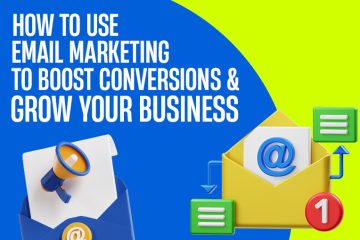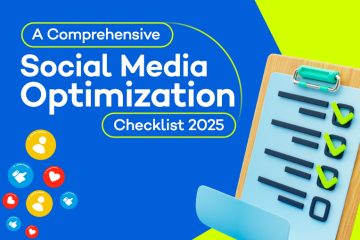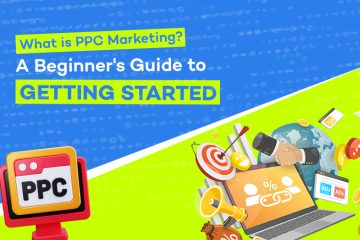In today’s competitive online marketplace, businesses are constantly adapting to stay relevant. A major shift in consumer behavior has brought Quick Commerce (Q-Commerce) into the spotlight. While traditional e-commerce offers a broad product catalog and longer delivery timelines, Q-Commerce promises ultra-fast delivery for essential goods. Both models serve different purposes and require distinct marketing strategies. For any business focusing on ecommerce SEO marketing, knowing the difference between these models is critical. Whether you’re launching your brand or scaling your D2C business, this guide will help you understand how Q-Commerce compares with traditional e-commerce and which one might suit your business better. If you’re working with a digital marketing company in Delhi, this will also help align your strategy for better ROI.
What is Traditional E-Commerce?
Traditional e-commerce relies heavily on ecommerce SEO marketing, supported by tools like SEO software, along with influencer collaborations, email marketing, and long-form content. Q-Commerce, on the other hand, focuses more on push notifications, mobile ads, quick videos, and time-limited deals.
This model is built on reach and variety. Businesses can cater to regional or national customers with a broad product portfolio. Well-known examples include Amazon, Flipkart, Myntra, and various brand-owned D2C sites.
What is Quick Commerce (Q-Commerce)?
Quick Commerce is the rapid version of e-commerce focused on delivering daily-use items within 10 to 60 minutes. It relies on hyperlocal delivery networks, micro-warehouses, and a limited product range to fulfill urgent customer needs.
Think groceries, snacks, personal care items, and over-the-counter medicines. Platforms like Zepto, Blinkit, Swiggy Instamart, and Dunzo have made Q-Commerce a household convenience, especially in urban areas.
Comparing Quick Commerce and Traditional E-Commerce in 2025
Delivery Speed
Q-Commerce wins in speed with deliveries often completed within 30 minutes. Traditional e-commerce, on the other hand, ranges from next-day to several days, depending on location and inventory.
Product Range
Traditional e-commerce allows for a large product catalog across various categories including electronics, fashion, home decor, and more. Q-Commerce limits itself to fast-moving essentials and impulse buys to ensure efficient fulfillment.
Logistics and Warehousing
Traditional e-commerce depends on large-scale warehouses and third-party logistics. Q-Commerce uses micro-fulfillment centers within cities to ensure speed. The operational structures of the two models are entirely different.
Target Audience Behavior
Traditional e-commerce shoppers plan their purchases and often look for better prices or specific products. Q-Commerce users act on immediate needs and convenience, such as running out of milk or toothpaste at night.
Technology Stack
While both require robust tech platforms, traditional e-commerce invests in CMS, CRM, and SEO tools. Q-Commerce leans more on mobile app development, real-time GPS tracking, and AI for demand forecasting and route optimization.
Purchase Intent
In traditional e-commerce, users may spend more time browsing, comparing, and making informed decisions. In Q-Commerce, purchases are quick, decisive, and frequently repeated.
Order Size and Frequency
Traditional e-commerce typically has higher cart values but lower frequency of purchase. Q-Commerce has smaller carts but higher order frequency due to repeat demand.
Marketing Channels
Traditional e-commerce relies heavily on ecommerce SEO marketing, influencer collaborations, email marketing, and long-form content. Q-Commerce focuses more on push notifications, mobile ads, quick videos, and time-limited deals.
SEO and Digital Strategy
SEO plays a foundational role in traditional e-commerce. It includes optimizing product listings, category pages, blogs, and reviews to attract traffic. Q-Commerce focuses more on local SEO, app store optimization, and geo-targeted ads. For long-term success, businesses should combine organic SEO with performance marketing tactics tailored to their model.
Geographic Reach
Traditional e-commerce serves customers across regions, including tier-2 and tier-3 cities. Q-Commerce operates in dense urban zones where delivery speed is viable and profitable. It’s not yet scalable to remote areas due to high cost and logistical complexity.
Operational Costs
Q-Commerce has higher delivery and personnel costs due to real-time fulfillment, but it compensates with quick inventory turnover and premium pricing. Traditional e-commerce benefits from economies of scale but requires investment in warehousing and shipping.
Which Model Should You Choose?
Choosing between Q-Commerce and traditional e-commerce depends on your product type, business goals, and customer expectations.
If you deal in groceries, beauty basics, baby products, or snacks, Q-Commerce can boost sales with instant service. If you sell apparel, electronics, or lifestyle goods, traditional e-commerce gives you better reach, content marketing potential, and brand storytelling opportunities.
Many modern businesses are adopting a hybrid model—offering Q-Commerce in selected metro cities and maintaining a traditional e-commerce store for broader coverage.
Common Mistakes to Avoid in Both Models
One common error in Q-Commerce is overpromising delivery speeds without enough backend infrastructure. This leads to customer dissatisfaction. For traditional e-commerce, the most frequent issue is slow website performance or poor mobile experience, which hurts conversion.
Another mistake is ignoring SEO. While Q-Commerce is more speed-oriented, even it needs proper SEO on app listings and local keywords. Traditional e-commerce businesses should avoid neglecting long-tail keyword optimization and schema markup.
Building Your Digital Strategy in 2025
Whether you’re leaning toward quick commerce or traditional, your ecommerce SEO marketing strategy must be tailored. Q-Commerce brands should prioritize app store SEO, real-time campaign tracking, and instant offer updates. Traditional e-commerce businesses must focus on technical SEO, content clusters, and scalable ad funnels.
If you are working with a digital marketing company in Delhi, make sure your agency understands both models and can build campaigns that cater to your target audience’s buying behavior. The same applies to platform selection—whether it’s Shopify for e-commerce or a custom mobile app for Q-Commerce.
Also, both models need strong analytics and retargeting. Use CRM tools to track user preferences and personalize offers, whether on the website or mobile app.
Final Thoughts
Quick Commerce and Traditional E-Commerce are two powerful models catering to different consumer mindsets. While one focuses on instant convenience, the other builds trust and long-term brand loyalty.
Your decision should depend on your product type, operations, and long-term goals. Whichever model you choose, make sure your ecommerce SEO marketing is aligned with it from day one.
To get expert help with SEO, ads, and content strategy, consider partnering with a reliable digital marketing company in Delhi like DI Infotech. With the right strategy and execution, both Quick Commerce and Traditional E-Commerce can deliver sustainable growth in 2025 and beyond.





0 Comments